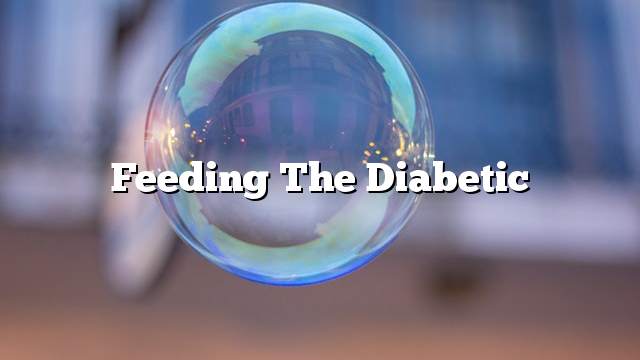Feeding the diabetic
Diabetes does not mean stopping all foods, limiting the diet to specific types only. It is possible to follow a delicious and healthy diet containing the preferred foods of diabetics, as well as to maintain blood sugar levels within normal levels. On the best steps to feed a diabetic.
Divide the number of meals
It is recommended to divide the meals daily into five or six meals, while avoiding neglect of any of these meals, as it reduces appetite, in addition to controlling the blood glucose levels.
Carbohydrate carbohydrates
Each meal should contain an amount of starchy carbohydrates that controls the blood glucose, in addition to having slow carbohydrate types of absorption, which do not affect blood sugar much, where brown rice, oatmeal bread can be eaten, plus To starch rich in fiber that keeps the digestive system healthy, and prevent constipation.
Reduce fat
The diabetic should reduce the intake of fats, especially saturated fats, and preferably replace them with unsaturated fats such as those found in olive oil and rapeseed. It is also more healthy for the heart muscle, and because the fat is a source rich in calories, the ease of eating will also help to reduce weight, Two servings of fish are recommended each week, such as sardines and salmon.
Eat vegetables and fruits
Diabetics are advised to eat at least five servings of vegetables and fruits daily, in order to provide the body with vitamins and minerals in addition to the fibers needed to balance the diet, fruits and vegetables can be eaten fresh as they are, or eat fresh juice or put in power.
Eat cereals and lentils
Eating grains, such as beans, chickpeas or lentils of all kinds, does not affect your blood glucose. It also helps control your blood lipids, and can be eaten by adding them to cooked food or salad.
Reduce sugary foods
Sugar and sugary foods do not mean a strict sugar-free diet. Sugar can be placed in foods and pancakes because it is part of a healthy diet, and you can drink low-sugar soft drinks or concentrated sugar-free juices as a way to reduce sugar in your diet.
Reduce salt in food
Salt in food should not exceed six grams per day. Salt increases blood pressure, increases the risk of heart disease, and reduces the share of salt-rich processed foods because it affects blood glucose.
